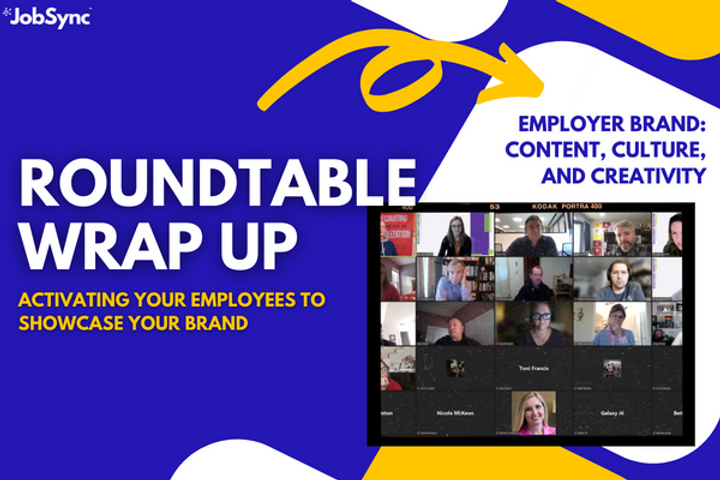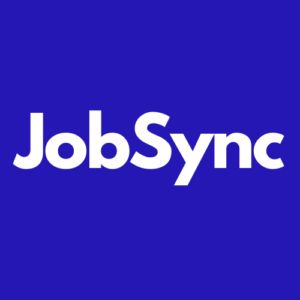
Content, Culture, and Creativity
Joel Lalgee of HireWell joined us to talk about the unique blend and benefits of activating your employer brand through your people, your literal brand ambassadors. He dove into the do’s, the don’ts, the successes, and the failures.
As always, we had our mics and cameras on, so tune in and watch another lively discussion from our latest Recruitment Marketing Roundtable.
The last few years has shown a meteoric rise in content creators. People started to lean into whatever their version of the ‘new normal’ was and out of it arose a slew of new faces in the content creation scene – especially in the realm of talent acquisition (we’re looking at you, LinkedIn).
We sought out Joel prior to his landing on the Favikon list of top LinkedIn creators, so when we noticed he made the list, it made even more sense to try to get him in front of our audience. Joel hasn’t grown his audience by doing the latest dance trends on TikTok or by hacking some algorithm. He realized who his audience is and that people weren’t necessarily speaking their language on social media. There are so many professional advice options out there but no one was speaking plainly – talking about and saying the things that everyone else was thinking but were too afraid to share.
Never one to shy away from trying something new, Joel knew he had found his niche and now, over 145,000 LinkedIn followers and 1,000,000 views on TikTok later, is still going strong in his quest to showcase the real life of recruiters to the world.
Activating your employees to showcase your brand
One of the great things about amassing a large social media following with a slant in your profession, is that your employer is captured in the limelight too – for good or for bad. You have probably read articles about employer brand and how it is of the utmost importance to hire people that will be passionate about the work that they do for you. What better way to showcase how great of a place you are to work at, then by having an in-house influencer?
When you allow employees to be their authentic selves and post online without fear, their followers can’t help but think, “Wow, that must be a great company to work for since they support their employees in this way.”
If you follow Joel you’ll notice that in between his posts about recruiting, hiring managers, and resume writers, you will see posts advocating for his employer. It won’t be until halfway through reading the post that you realize what it’s about. It’s never pushy, never salesy, and never a cliche way of saying, “This is a great place to work, come work here.” The posts have a flow that is similar to the rest of the content that he creates. It speaks on a human level that most people can relate to. In other words, it does not give the, “I’m going to scroll past this,” vibe.
So how can you be an active participant in showcasing your natural talents to grow a better social media following while simultaneously helping to enhance your company’s employer brand? We have compiled a list of 5 top tips from Joel to help you get started.
Lalgee’s Laws to Social Media Success
1. Lead with trust
“The companies that are going to kill it in attracting talent are going to let their employees be themselves.” – Joel Lalgee
Do you know what your actual culture is? Are you supportive of a culture of embracing what people want to and enjoy doing? If you hire someone for who they are as a person, and you care about them, there’s no better way to help them grow than to encourage and support what they’re posting online – assuming what is being posted isn’t so far off-base that your company doesn’t align with it, then there’s a conversation to have. In fact, it’s a conversation you should have before you hire them, or as they onboard. As long as your employees are posting things that drive the brand forward and don’t create overwhelming backlash, letting them be themselves is a sure fire way to showcase your culture.
2. Employer branding and social media marketing aren’t the same thing
Most companies have a page just to showcase their company culture and their people. And it’s completely separate from their corporate page that promotes their products and services. But try to have this approach when it comes to your personal pages on social media. While employees are not required to include an aspect of their work in everything (or anything) that they post, it is still their personal platform even if it aligns with work at times. By continuing to let them be their authentic self, people will know you are not just always trying to sell them on something and they’ll attract a bigger audience because they’re being a ‘real’ person. When people are excited about your posts, it won’t matter (as much) when they decide to include something about work because they’ve set the expectation that the channel isn’t solely dedicated to that.
3. Let them tell their story – not what they think the audience wants to hear
We asked Joel if there was a formula to his posts. The biggest driver for him was to pull from what inspired him and to be his authentic self. In other words, he posts what he likes. He realized that there were content creators that thrived when they related to the candidate experience, but he noticed there wasn’t a lot of talk about the recruiter experience. So, he decided to pull from his own personal experience as a recruiter and highlight the highs and lows of that. There are too many people on the internet to find a way to please everyone – so when your employees can focus on what they’re already an expert at and attract other people in that space, there is no formula needed – they’re already speaking the language of their audience, by speaking their truth.
4. Thought leaders not required
“If you’re recruiting in tech, you’re not going to be a thought leader in tech.” – Joel Lalgee
There is a common misconception that recruiters are experts in the industry they recruit for. That is not always the case. Imagine, every recruiter that finds candidates to work on rockets is an actual rocket scientist – that would be something.
It can be disheartening to see the lists like the one we shared above that tout who the top creators are – but circle back to rule number 2 and remember that the most important thing is being your authentic self and speaking your truth. It’s painfully obvious when someone is trying too hard to get a point across. Your online audience does not want to be talked at, they want to be talked to. Engaged with. They want to relate to you without feeling self-conscious. True thought leadership is not born out of saying what is already known – it’s about inspiring others WITH your thoughts, your viewpoint, your questions, to inspire them to come up with their own.
5. Timing is everything
Trends only have a certain shelf life until the next fad rolls in. When creating content for your online audience, referencing a trend or a topic that was all the rage a year ago, a month ago or even last week may not resonate. According to Joel, you should be paying attention to and understanding the conversations that you are having right now and then react to that, and then figure out how to scale it.
Are your peers all talking about easy apply? Then focus your content on easy apply. Are you seeing blogs and articles about quiet quitting? Guess what your next post should focus on. Or sometimes the most relevant thing is the thing that literally just happened – not a trend, just a reality.
The reality for most companies is this is newish territory – and social media rules have previously consisted of a long long long list of what not to say, what not to do and how not to ‘influence’ or ‘impact’ the brand in any negative way. The problem is, that is the same as saying we want the brand to be sterile. Uninteresting, uninfluential. Boring, old, stale, plain, toast. But that isn’t the only path. State your brand requirements, your must haves. Teach your employees to avoid a handful of controversial topics IF they are important to the business; i.e. if you are a green solar company, promoting fracking might be a conflict for your employees. But the most important rule is to remind your team that they are part of a team, that they are adults, who should make adult decisions. And for the love of everything DO. NOT. ENGAGE. WITH. KEYBOARD. WARRIORS.

